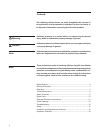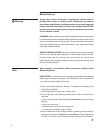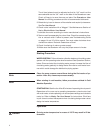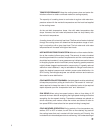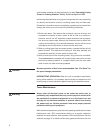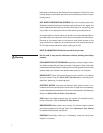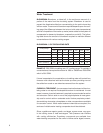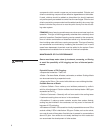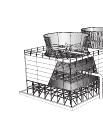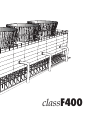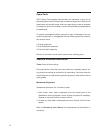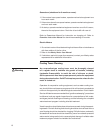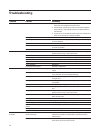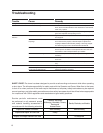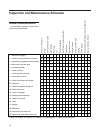5
TOWER PERFORMANCE–Keep the cooling tower clean and water dis-
tribution uniform to obtain continued maximum cooling capacity.
The capacity of a cooling tower to cool water to a given cold water tem-
perature varies with the wet-bulb temperature and the heat load applied
to the cooling tower.
As the wet-bulb temperature drops, the cold water temperature also
drops. However, the cold water temperature does not drop linearly with
the wet-bulb temperature.
A cooling tower will not control heat load. The flow rate of water circulated
through the cooling tower will determine the temperature range of cool-
ing in conjunction with a given heat load. The hot water and cold water
temperatures will increase with higher heat loads.
HOT WATER DISTRIBUTION SYSTEM–Maintain uniform water distribu-
tion at the nozzles (uniform spray cone). The amount of water circulated
should approximate the contract requirements and the nozzle pressure
should be kept constant. Lower pressures may indicate excessive losses
in the piping system and/or insufficient pump capacity; greater pressures
might indicate clogged nozzles and/or overpumping. If a greatly reduced
water flow rate is desired, it may be advisable to change nozzle sizes to
obtain the desired pressure and maintain proper water distribution. An
SPX Cooling Technologies engineer can advise minimum and maximum
flow rates for even distribution.
COLD WATER COLLECTION BASIN–A suitable depth must be maintained
to keep the pumps from pulling air into the line. The amount of “make-up”
water required to keep the water in the collection basin at the required
depth depends upon the “evaporation loss” and “blowdown” .
FAN DRIVE–When using two-speed motors, allow a time delay of 20
seconds minimum after de-energizing the high-speed winding and before
energizing the low-speed winding. Tremendous stresses are placed on
driven machinery and motors unless the motors are allowed to slow to
low-speed RPM or less before the low-speed winding is energized.
COLD WEATHER OPERATION–During periods of low temperature op-
eration, 35°F to 40°F or below, ice will form on the relatively dry parts of
the cooling tower that are in contact with the incoming air. Primarily, this
includes the air inlet and adjacent structural framing. Your understanding of
➠




